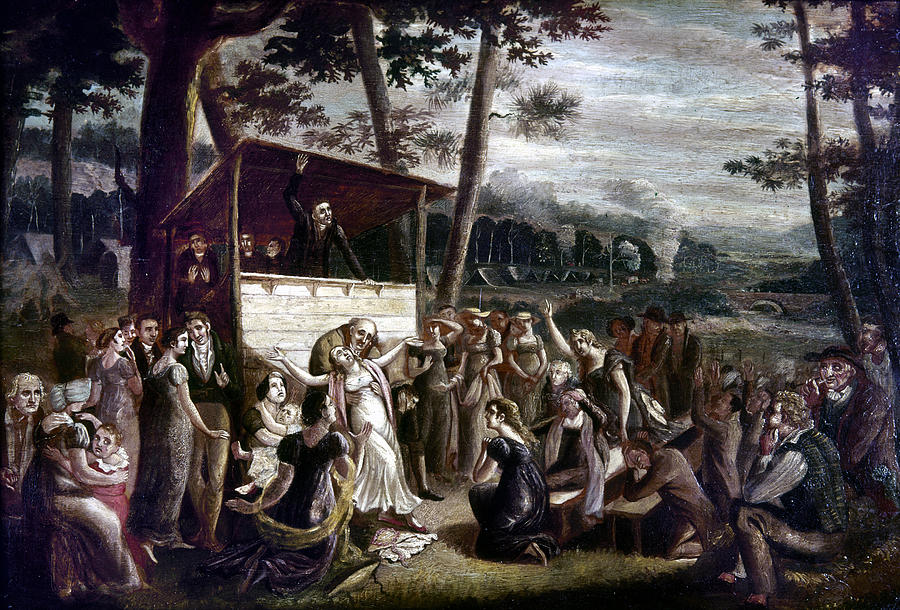Exploring Historical Christian Movements: A Journey Through Faith and Time
Christian history is rich with movements that have shaped not only the spiritual landscape but also the socio-political spheres of various eras. Within this article, I’ll take you on a journey through some pivotal historical Christian movements that have profoundly influenced both past and contemporary faith practices. As someone who has wrestled with doubt and discovered deeper convictions, I find these movements pivotal in understanding the resilience and evolution of Christian belief.
The Early Church: Foundations of Faith
The birth of the Christian church is intrinsically linked to the life, death, and resurrection of Jesus Christ. Following His ascension, the apostles carried forth His teachings, laying the groundwork for Christianity. The Book of Acts provides detailed narratives of the early church’s formation, struggles, and growth. This era was marked by intense persecution yet unprecedented spiritual fervor.
- Key Figure: Apostle Paul – His missionary journeys and epistles formed much of the New Testament and solidified church doctrine.
- Pivotal Moment: The Council of Jerusalem (circa AD 50) – Addressed the inclusion of Gentiles, exemplifying the early church’s efforts in doctrinal unity.
The Monastic Movement: Seeking Spiritual Depth
As Christianity became the state religion of the Roman Empire, a desire for deeper spiritual discipline gave rise to the Monastic Movement. Individuals like St. Anthony and St. Benedict retreated into the desert to lead lives of prayer and asceticism, laying the foundation for monastic communities.
- Key Figure: St. Benedict – Authored The Rule of Saint Benedict, a guide to monastic life that continues to influence monasticism.
- Pivotal Moment: The establishment of Montecassino Abbey (AD 529) – Became a center for learning and spiritual growth.
These communities preserved Christian scriptures and facilitated theological reflection, significantly contributing to Western Christianity’s intellectual and spiritual heritage.
The Reformation: A Call for Renewal
By the 16th century, the church faced internal corruption and doctrinal disputes, leading to the Reformation. This movement sought to return to the fundamentals of Christian faith and practice.
- Key Figure: Martin Luther – His 95 Theses (1517) criticized church practices, sparking widespread religious and cultural transformations.
- Pivotal Moment: The Diet of Worms (1521) – Where Luther defended his teachings, leading to his excommunication but eventual formation of Protestantism.
This era also introduced other reformers like John Calvin and Huldrych Zwingli, who each brought unique theological insights, further diversifying Christian theology and practice. These studies informed the principles of Christian vocation and work, aligning professional endeavors with divine calling.
The Great Awakenings: Reviving Faith
The Great Awakenings were periods of religious revival that swept through Europe and America, emphasizing personal faith, repentance, and the experience of salvation.
- Key Figure: Jonathan Edwards – His sermon “Sinners in the Hands of an Angry God” (1741) exemplified the fervent preaching of the First Great Awakening.
- Pivotal Moment: The Cane Ridge Revival (1801) – A pinnacle of the Second Great Awakening, drawing thousands to renewed faith and evangelical zeal.
These movements renewed Christian fervor and catalyzed social reforms, including the abolition of slavery and the temperance movement, demonstrating the profound societal impact of revived personal faith.

Theological Implications and Contemporary Relevance
Reflecting on these movements reveals the dynamic and resilient nature of Christian faith. Each era’s unique challenges and responses underscore the importance of continuous reform and renewal. As I contemplated my own experiences of facing illness and embracing doubt, I found strength in understanding these historical precedents.
Lessons for Today
| Lesson | Historical Context | Modern Application |
|---|---|---|
| Resilience in Faith | Early Church persecution | Perseverance in contemporary struggles |
| Spiritual Discipline | Monastic asceticism | Practices like fasting, prayer, and meditation |
| Reform and Renewal | Reformation era | Continuous self-examination and improvement |
| Personal Revival | Great Awakenings | Embracing personal faith journeys and communal worship |
Conclusion: Engaging with Our Heritage
The diversity of Christian thought and practice throughout history offers a rich tapestry from which to draw inspiration and guidance. By engaging with our theological and historical heritage, we can find deeper meaning and direction in our contemporary faith journey.
For those interested in delving deeper, I recommend exploring resources that discuss these movements in greater detail, such as Philip Schaff’s “History of the Christian Church” and primary sources like Martin Luther’s writings.
As we navigate our modern, often complex lives, may we remember the lessons of those who came before us, finding strength in their faith and resilience in our shared journey towards truth and love.

Focus Keyphrase: Historical Christian Movements

This article was a fascinating read! As someone interested in spirituality but coming from a scientific background, I appreciated the detailed historical context and the clear presentation of key figures and moments. It’s enlightening to see how these movements influenced not just religious practices but also social reforms. Great job, David!
Thank you for taking the time to read this article. I wrote this piece to help others understand the significant historical Christian movements that have shaped our spiritual and social landscapes. By reflecting on these movements, we can gain insights into our own faith journeys and find resilience in our contemporary struggles. I hope this exploration inspires you as much as it has inspired me.